Nathaniel Livermore Stebbins (January 9, 1847 - July 10, 1922) was an American marine photographer, whose surviving photographs document an important era in the development of American maritime activities, as sweeping technological and social changed revolutionized activity on the water, in military, commercial and leisure spheres.
In addition to selling prints of his images, he also produced a number of books of nautical images in his lifetime, including an important illustrated coastal guide, which was path-breaking in showing the practical uses for photography. His photography (and, on occasion, writing) also appeared in such well-known magazines as The Rudder and Yachting.
Over his working career as a commercial photographer (from 1884 to 1922), he took approximately 25,000 images. Of these, about 60% were of marine subjects (the majority of those being of leisure activities, but many are of military and commercial scenes, a valuable record for historians). The remainder include a wide variety of commercial work, including the theatre, railroads, home interiors, etc.
Biography
He was born in Meadville, Pennsylvania on January 9, 1847, the son of a well-known Unitarian clergyman, Ruphus Phineas Stebbins, and his wife Eliza Clark Livermore. He was always interested in the sea, and as a young man sailed to South America as a passenger, although his early career was not related to either the sea, or photography.
On March 6, 1872, he married Etta Bowles. They had three children; Ellen, Charles, and Katharine.
He became interested in photography in about 1882, shortly after the introduction of dry-plate photography, with its fast exposure time and ease of use, made photography more practical. With an interest in the sea, and little competition in that area, it was natural that he should specialize in maritime photography.
He moved his family to the Boston, Massachusetts area to engage in this field, and joined yacht clubs in Boston and Marblehead. It is not known whether his photography business was his sole income; there are indications that either he or his wife had independent means, but little is known.
He went on to publish a number of large-format books showcasing his maritime photography. For his innovative Illustrated Coast Pilot, which illustrated principal landmarks and aids to navigation on the East Coast, he studied for, and passed, the examination for a licensed coastal pilot for a considerable section of the East Coast. This early photographic record may be the first publication to systematically employ photography to illustrate landmarks in a book of sailing directions, a type of navigational aid used by mariners for more than one thousand years. The first edition (1891) of the Illustrated Coast Pilot covered only the U.S. east coast between New York and Maine. Stebbins extended coverage to the entire Atlantic Coast and the Gulf Coast in the second edition (1896).
It is thought that many of the photographs dating from his latter years were actually taken by assistants, as he was rather frail by then. He was living in West Somerville, Massachusetts when he died, aged 75.
Surviving works
His collection at his death included about 20,000 negatives, almost all on glass plates (the usual medium for high-resolution negatives in his time); it was bought by another photographer, and on his death, many of Stebbins' plates were sold for scrap (tradition holds that they were used in greenhouses).
A few plates found their way to the Peabody Museum in Salem, Massachusetts, and another small group eventually wound up at the Mariners' Museum, but the bulk of the remaining collection (about 5,000 images total, of which a little over 2,500 are the original glass negatives) were rescued for Historic New England by William Appleton, the founder of the Society.
Almost all are of maritime subjects; very little of his non-maritime work survives.
USS Kearsarge in 1899
yacht Reliance in 1903
USS Kansas in 1906
USS Narwhal around 1912
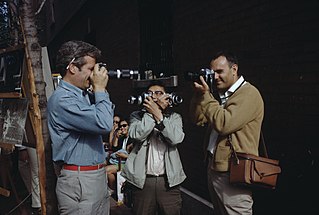
Photography is the art, application, and practice of creating images by recording light, either electronically by means of an image sensor, or chemically by means of a light-sensitive material such as photographic film. It is employed in many fields of science, manufacturing, and business, as well as its more direct uses for art, film and video production, recreational purposes, hobby, and mass communication.

Ansel Easton Adams was an American landscape photographer and environmentalist known for his black-and-white images of the American West. He helped found Group f/64, an association of photographers advocating "pure" photography which favored sharp focus and the use of the full tonal range of a photograph. He and Fred Archer developed a system of image-making called the Zone System, a method of achieving a desired final print through a technical understanding of how the tonal range of an image is the result of choices made in exposure, negative development, and printing.
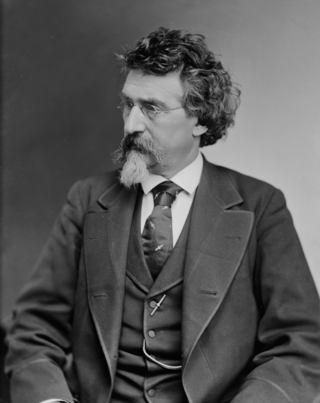
Mathew B. Brady was an American photographer. Known as one of the earliest and most famous photographers in American history, he is best known for his scenes of the Civil War. He studied under inventor Samuel Morse, who pioneered the daguerreotype technique in America. Brady opened his own studio in New York City in 1844, and went on to photograph U.S. presidents John Quincy Adams, Abraham Lincoln, and Martin Van Buren, among other public figures.

Sergey Mikhaylovich Prokudin-Gorsky was a Russian chemist and photographer. He is best known for his pioneering work in colour photography and his effort to document early 20th-century Russia.

The American Civil War was the most widely covered conflict of the 19th century. The images would provide posterity with a comprehensive visual record of the war and its leading figures, and make a powerful impression on the populace. Something not generally known by the public is the fact that roughly 70% of the war's documentary photography was captured by the twin lenses of a stereo camera. The American Civil War was the first war in history whose intimate reality would be brought home to the public, not only in newspaper depictions, album cards and cartes-de-visite, but in a popular new 3D format called a "stereograph," "stereocard" or "stereoview." Millions of these cards were produced and purchased by a public eager to experience the nature of warfare in a whole new way.

War photography involves photographing armed conflict and its effects on people and places. Photographers who participate in this genre may find themselves placed in harm's way, and are sometimes killed trying to get their pictures out of the war arena.

Reliance was the 1903 America's Cup defender designed by Nat Herreshoff.

John Adams Whipple was an American inventor and early photographer. He was the first in the United States to manufacture the chemicals used for daguerreotypes. He pioneered astronomical and night photography. He was a prize-winner for his extraordinary early photographs of the moon and he was the first to produce images of stars other than the sun. Among those was the star Vega and the Mizar-Alcor stellar sextuple system, which was thought to be a double star until 2009.

James Wallace Black, known professionally as J.W. Black, was an early American photographer whose career was marked by experimentation and innovation.
Kate Seston Matthews was an American photographer who depicted tableaux vivants and scenes of everyday life in her community of Pewee Valley, Kentucky, at the turn of the 20th century.
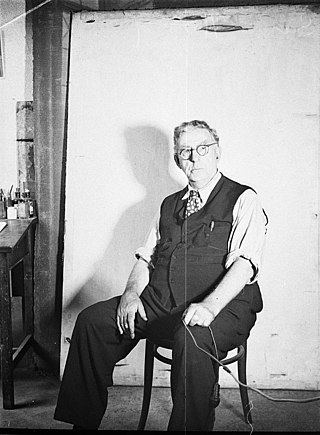
Samuel John Hood was an Australian photographer and photojournalist whose career spanned from the 1880s to the 1950s.
The Boston Marine Society is a charitable organization in Boston, Massachusetts, formed "to 'make navigation more safe' and to relieve members and their families in poverty or other 'adverse accidents in life.'" Membership generally consists of current and former ship captains. The society provides financial support to members and their families in times of need; and also actively advises on maritime navigational safety such as the placement of lighthouses and buoys, and selection of Boston Harbor pilots.

USS Liberty III (SP-1229), sometimes written Liberty # 3, and also referred to during her naval career as Liberty and as Pilot Boat Liberty, No. 3, was a United States Navy patrol vessel in commission from 1917 to 1919. The Liberty was a pilot boat from 1896-1917. She was a replacement for the pilot boat D. J. Lawlor. After World War I, the Liberty returned to pilot service until 1934 when she was purchased as a yacht.

Morley Baer, an American photographer and teacher, was born in Toledo, Ohio. Baer was head of the photography department at the San Francisco Art Institute, and known for his photographs of San Francisco's "Painted Ladies" Victorian houses, California buildings, landscape and seascapes.

Samuel Havre Pine, was a 19th-century American ship designer and builder located in Greenpoint, Brooklyn. He built the racing yacht Enchantress as well as many sailing schooners and yachts; steam yachts; and steamships.

Henry Winkelmann (1860–1931) was a New Zealand photographer. Winkelmann's photographs covered a wide range of topics, but he is best known for his yachting photographs.

Catharine Weed Barnes was an early American photographer who later lived in England. She was a strong supporter of women photographers.
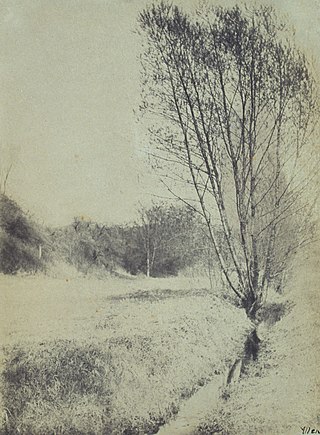
Mary Electa Allen (1858–1941) was an American photographer and co-founder of the Deerfield Society of Blue and White Needlework. She worked alongside her sister as a photographer from 1885 until 1920 capturing the life and landscape of Old Deerfield, among other subjects and paid commissions.
Frank Cousins was an American writer and photographer of Federal style architecture in New England. Cousins’s photographs added to the preservation movement in the early 1900s by documenting buildings and a style of architecture that was in danger of being demolished. He was born, lived, and worked in Salem, MA.
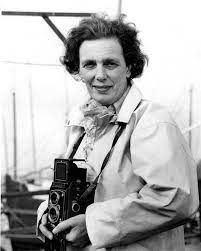
Eileen Ramsay was a British photographer who made work about yachting and powerboats.




















